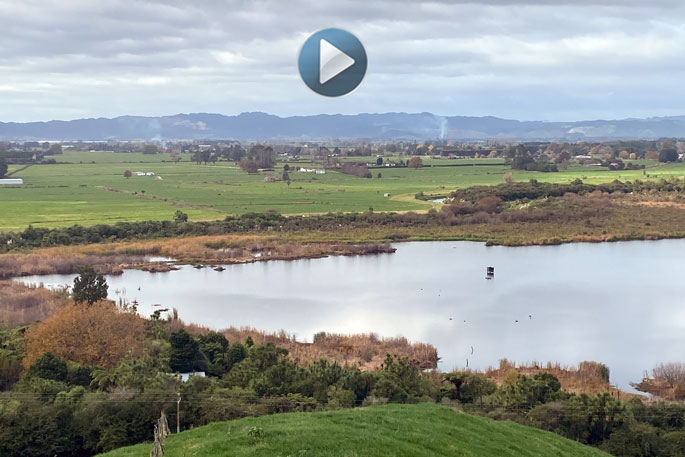Winter is here, and with it comes increased rainfall and weather events across the Bay of Plenty.
This time of the year makes now the ideal time to find out if that soggy, unproductive piece of land on your property is a wetland – and what you can do with it.
Wetlands are important ecosystems for environmental, economic and cultural reasons. They help maintain water quality by filtering our contaminants and support biodiversity – including many taonga (sacred) and threatened native species of plants and animals.
They also play a key role in supporting resilience against the effects of a changing climate, such as by reducing the impacts of flooding and heavy rainfall, and stabilising shorelines and riverbanks.
Across the region, Toi Moana Bay of Plenty Regional Council works with tangata whenua, farmers, and care and community groups to help restore and protect these precious taonga.
Land Management Officer Heather McKenzie says supporting landowners and care groups to protect and restore wetlands is an important part of Regional Council’s work.
“With only 10 per cent of the region’s wetlands left, careful management is required to ensure these sites are healthy and continue to provide suitable habitat for native plants and animal communities.
“By increasing opportunities for these species to flourish, we can improve biodiversity in the Bay. High biodiversity can help ecosystems become more resilient and adaptable to climate changes and natural disasters.”
An example of this is the restoration and protection of Tumurau Lagoon, one of the largest and last remaining intact wetlands on the Rangitāiki Plains.
Nestled between Braemar Road and the Tarawera River, Regional Council Land Management Officers have been working to restore this 147ha wetland back to its original condition for the past 15 years.
Regional Council Eastern Coastal Catchments Team Leader, Charles Harley says Regional Council got involved with the property because of its significance as a priority biodiversity site – an ecologically important area that is home to rare or threaten species.
“Quite often you will get a wetland that has one or two endangered species, but this site has multiple rare, threaten or critically endangered species of both flora and fauna. It’s rare to find it all in one site”.
Do you have a wet, soggy or spongy patch of land on your property? This could be a wetland.
Regional Council has a team of Land Management Officers ready to provide you with support, planning advice and guidance, and technical expertise to help you get the most out of your land.
If you’re interested in restoring a wetland on your property, or learning more about biodiversity in your area, talk to your local Land Management Officer: boprc.govt.nz/environment/fresh-water/rivers-lakes-and-wetlands/wetlands



0 comments
Leave a Comment
You must be logged in to make a comment.